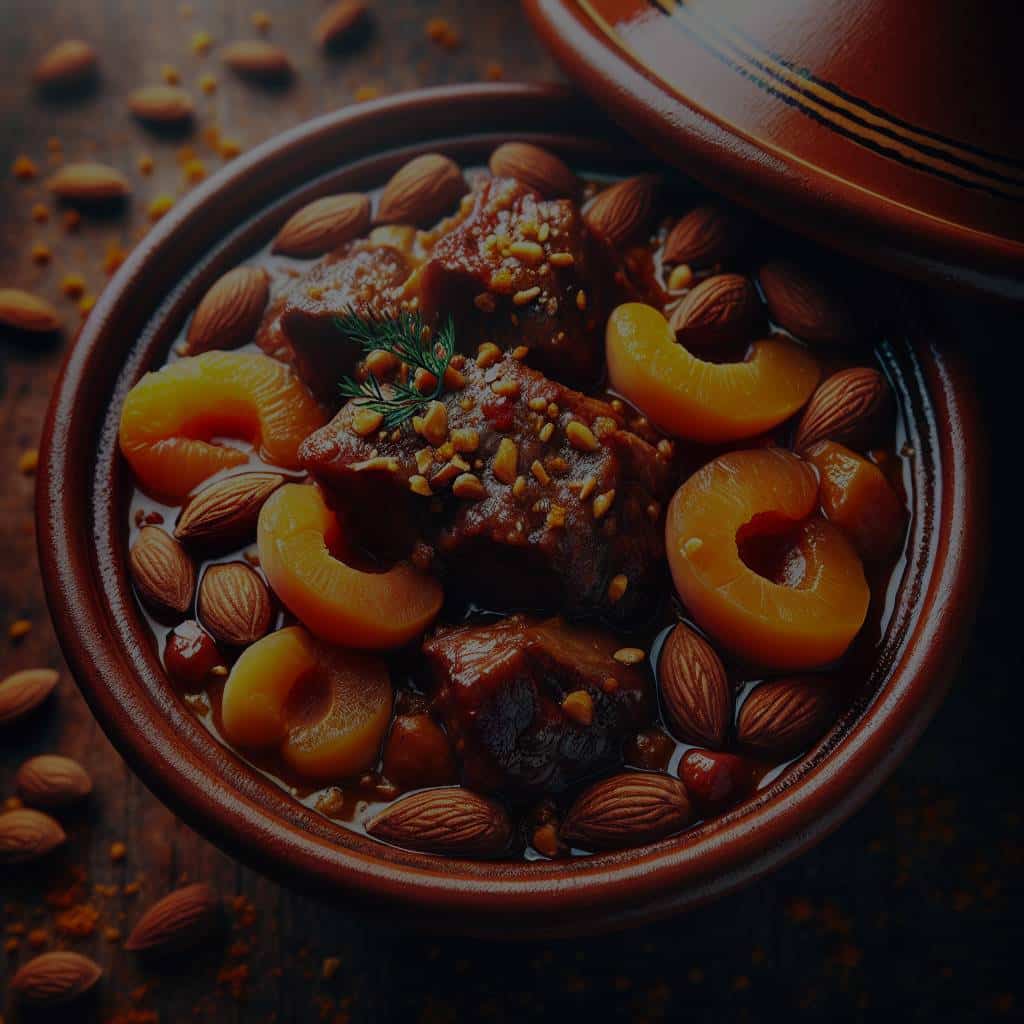What’s the Secret to Perfectly Tender Moroccan Tagine with Apricots and Almonds?

Morocco, a country known for its vibrant souks, stunning landscapes, and rich cultural heritage, is also home to an exceptional culinary tradition. A heart of this tradition is the tagine: a slow-cooked stew named after the conical clay pot it is cooked in. With flavors that are as layered and complex as the country’s history, this dish is a celebration of spice, slow cooking, and soulful food. One of the most celebrated tagine recipes brings together tender morsels of meat with the sweetness of apricots and the crunch of almonds. If you’ve ever wondered how to achieve that perfect tenderness and balance of flavors, you’re in the right place.
Choosing Your Protein: Chicken or Lamb Tagine
Whether you prefer chicken or lamb, your choice of protein plays a significant role in your tagine. Both of these meats are traditional in Moroccan cooking, but each brings a distinct flavor and texture to the dish.
A lire en complément : How to Create a Gourmet Burrata Salad with Roasted Peppers and Balsamic Glaze?
Lamb tagine is hearty and rich, the strong flavor of the lamb pairing beautifully with sweet apricots and earthy spices. In contrast, chicken tagine is lighter, with the more subtle flavor of the chicken providing a backdrop that allows the spices and apricots to shine.
For a perfectly tender lamb or chicken tagine, slow cooking is the secret. This method of cooking allows the tough fibers in the meat to break down over time, resulting in mouthwateringly tender morsels. Cook your lamb or chicken for at least 2 hours on a low heat in your tagine pot.
A voir aussi : How Can You Bake a Gluten-Free Lemon Drizzle Cake with the Same Zesty Flavor?
Oiling the Pot: The Importance of Heat and Oil
Cooking in a tagine pot is a unique experience. The conical shape of the pot is designed to circulate heat and moisture, leading to tender, flavorful dishes. However, the pot itself needs some attention before you start cooking to ensure the best results.
Seasoning the tagine pot with oil is a crucial first step. This process not only adds flavor to your dish but also protects the pot from the high heat of cooking. Use a high-quality Moroccan olive oil to lightly coat the inside of your tagine pot. After oiling, preheat the pot for a few minutes to ensure it is hot enough before adding your ingredients.
Crafting the Perfect Sauce: Water and Spices
The sauce of a tagine is where the dish’s character truly lies. It is the medium that brings all the ingredients together, infusing them with a delightful blend of flavors. The key to a great sauce lies in water and spices.
Start your sauce with a base of water, which will help to evenly distribute heat and prevent your ingredients from sticking to the pot. Then, add a medley of Moroccan spices. Cinnamon is a must in a Moroccan tagine, bringing a sweet, warming quality to the dish. Other typical spices include cumin, coriander, paprika, and turmeric.
For a sweet twist, add a spoonful or two of honey. This will enhance the sweetness of the apricots and balance the savory elements of the dish.
Balancing Sweet and Savory: Apricots and Almonds
Apricots and almonds are the star ingredients of this tagine recipe. Sweet, chewy apricots and crunchy, nutty almonds add contrasting textures and flavors that elevate the dish to new heights.
Dried apricots work best in a tagine. They will rehydrate during the cooking process, soaking up the flavorful sauce and becoming wonderfully plump and juicy. Be sure to add the apricots towards the end of cooking to prevent them from becoming too mushy.
Almonds add a fantastic crunch to the tagine. To enhance their flavor, toast the almonds in a dry pan until they are golden and fragrant. Then, add them to the tagine in the last 10 minutes of cooking so they remain crunchy.
Bringing it All Together: The Cooking Process
Now that all your ingredients are prepped and ready, it’s time to bring your Moroccan tagine to life. Start by heating your oiled tagine pot on a medium flame. Add your chosen meat (chicken or lamb) and brown it on all sides. This will seal in the juices and provide a good base flavor for your dish.
Next, add your spice blend, stir well to coat the meat, and then add enough water to cover the meat. Reduce the heat to low, cover the pot with its lid, and allow the tagine to simmer gently.
After about an hour, add your apricots and continue to cook. Remember, slow and steady is the key to a tender, flavorful tagine. After another hour, add your toasted almonds, adjust seasoning if necessary, and let the tagine cook for another 10-15 minutes.
Your Moroccan tagine is now ready. Even though we’re not at the dining tables of Marrakech, each spoonful will take us on a culinary journey to the spice-scented streets of Morocco. Each bite, with its perfect blend of sweet apricots, crunchy almonds, and tender meat, is a testament to the magic of Moroccan cooking. Enjoy!
Serving Suggestions: Unveiling the Perfect Tagine Experience
Serving your Moroccan tagine is just as important as the cooking process itself. Presentation matters in Moroccan culture, and your tagine with apricots and almonds deserves to be presented in the best way. Whether you’re enjoying the dish with a small group of close friends or cooking for a larger dinner party, the way you serve your tagine can take the dining experience to the next level.
To truly experience a Moroccan tagine, serve it with traditional sides like couscous or warm, freshly baked bread. The fluffy grains of couscous complement the rich, aromatic tagine perfectly, while bread can be used to scoop up the tender chunks of meat and flavorful sauce. If you’re feeling adventurous, add a side of steamed vegetables or a refreshing salad for a balanced meal.
As for the tagine itself, serve it directly from the pot it was cooked in. Not only does this maintain the warmth of the dish, but it also gives diners a sense of the slow cooking process that has gone into creating it. In Moroccan culture, it’s common for everyone to eat from the same dish, signifying unity and togetherness. However, if you prefer, you can also serve individual portions.
Remember, a tagine is more than just a meal – it’s an experience. As you sit down to enjoy your tagine, take a moment to appreciate the layering of flavors and the slow, careful preparation that has gone into it.
In Conclusion: A Journey of Flavors
In essence, a perfect Moroccan tagine is a harmonious blend of carefully chosen ingredients, patient slow cooking, and the right balance of sweet and savory. Whether it’s tender lamb tagine or succulent chicken tagine, the result is always a dish that warms the heart and tantalizes the taste buds.
From the initial process of choosing the protein, oiling the pot with high-quality Moroccan olive oil, creating the perfect sauce, and balancing the sweetness of dried apricots with the crunch of almonds, every step contributes to the overall flavors of the dish. It’s a recipe that requires time and love, but the outcome is undoubtedly worth it.
Thankfully, you don’t need to be in Marrakech to enjoy a flavorful tagine. With this guide, you can create a mouthwatering Moroccan tagine right in your kitchen, even in a Dutch oven or a slow cooker if you don’t have a traditional tagine pot.
Every bite of this tagine recipe is a testament to the magic of Moroccan cuisine – a culinary journey to the spice-scented streets of Morocco. So gather your ingredients, ignite the flame, and start slow cooking your path to a perfect Moroccan tagine.
